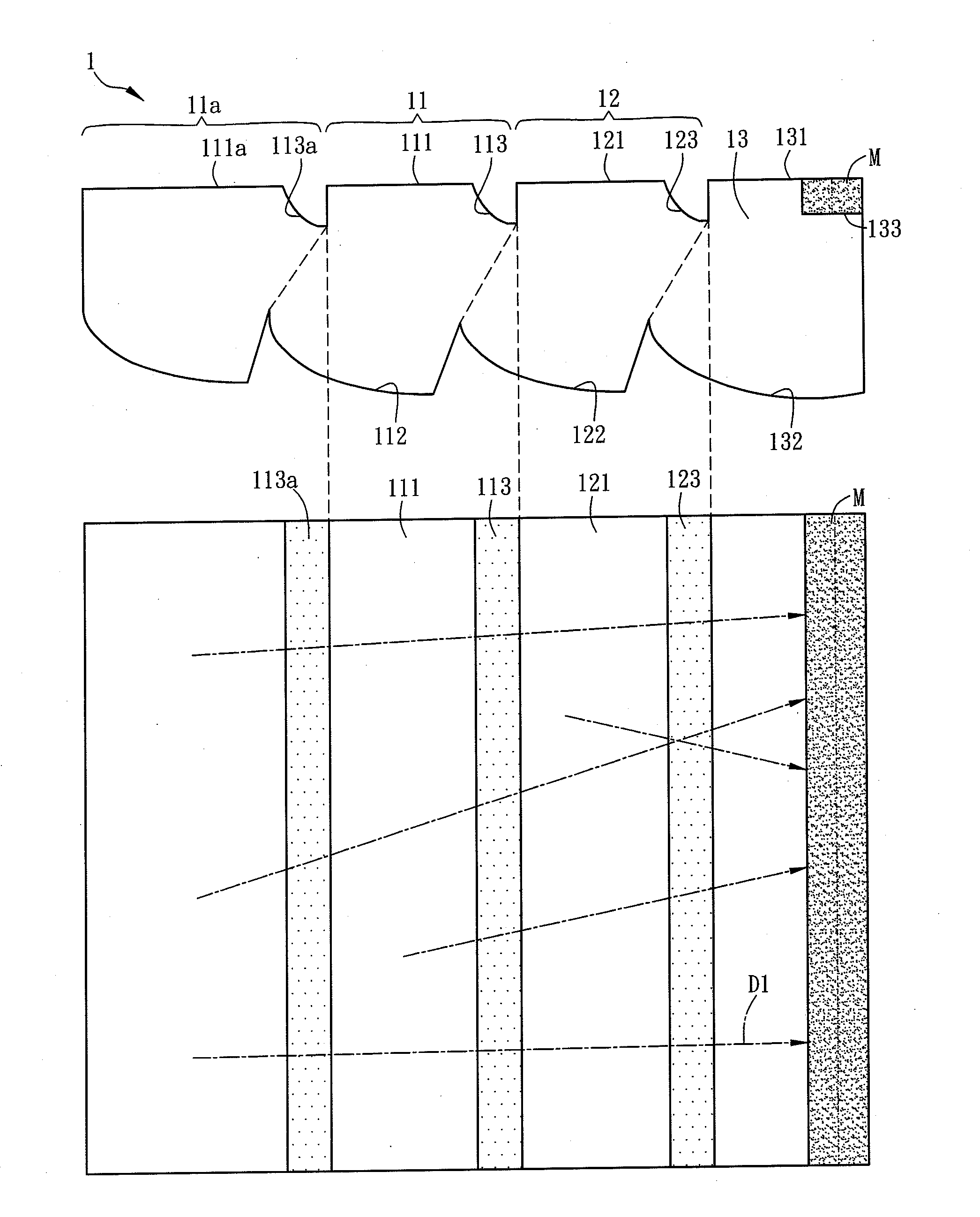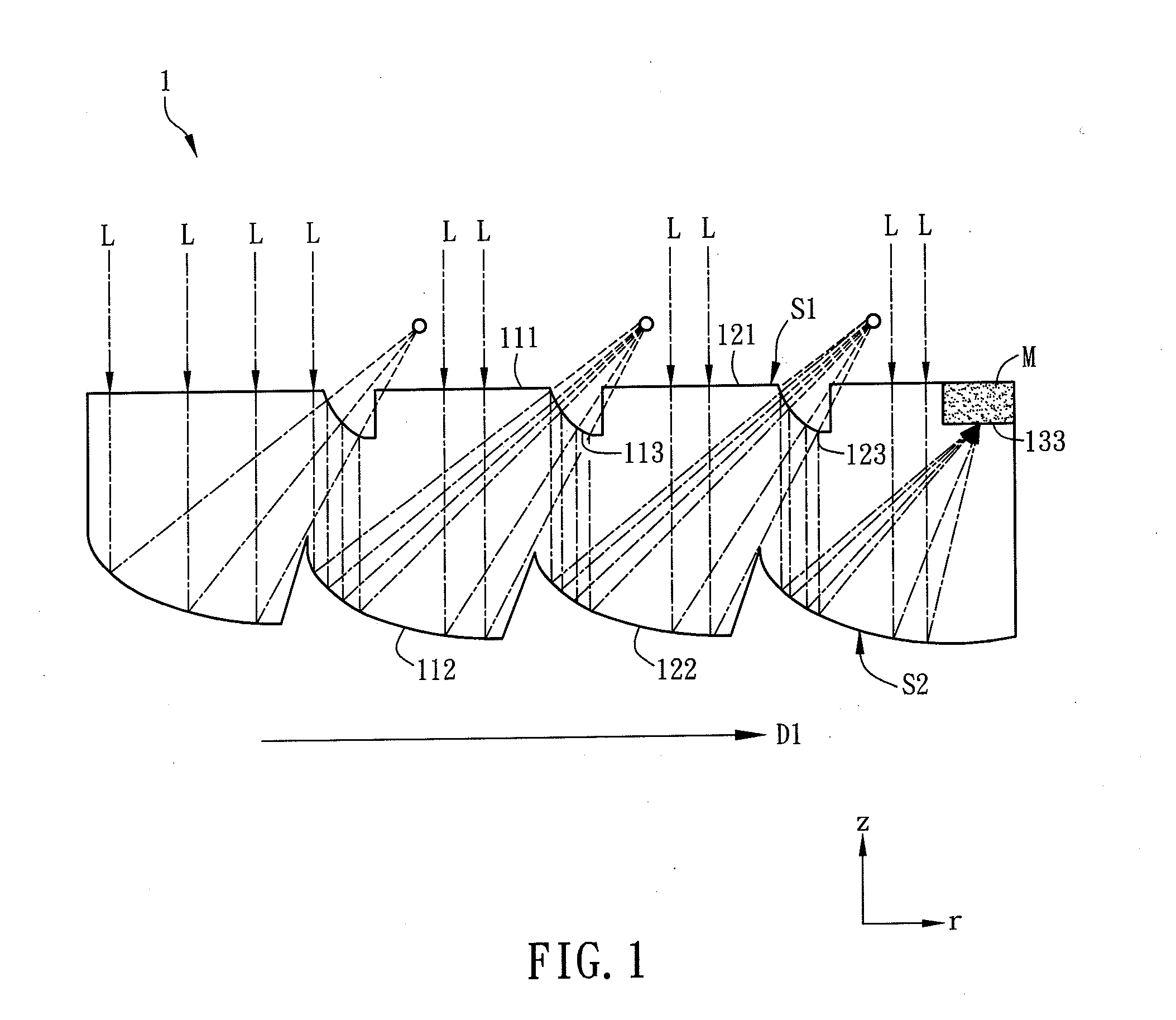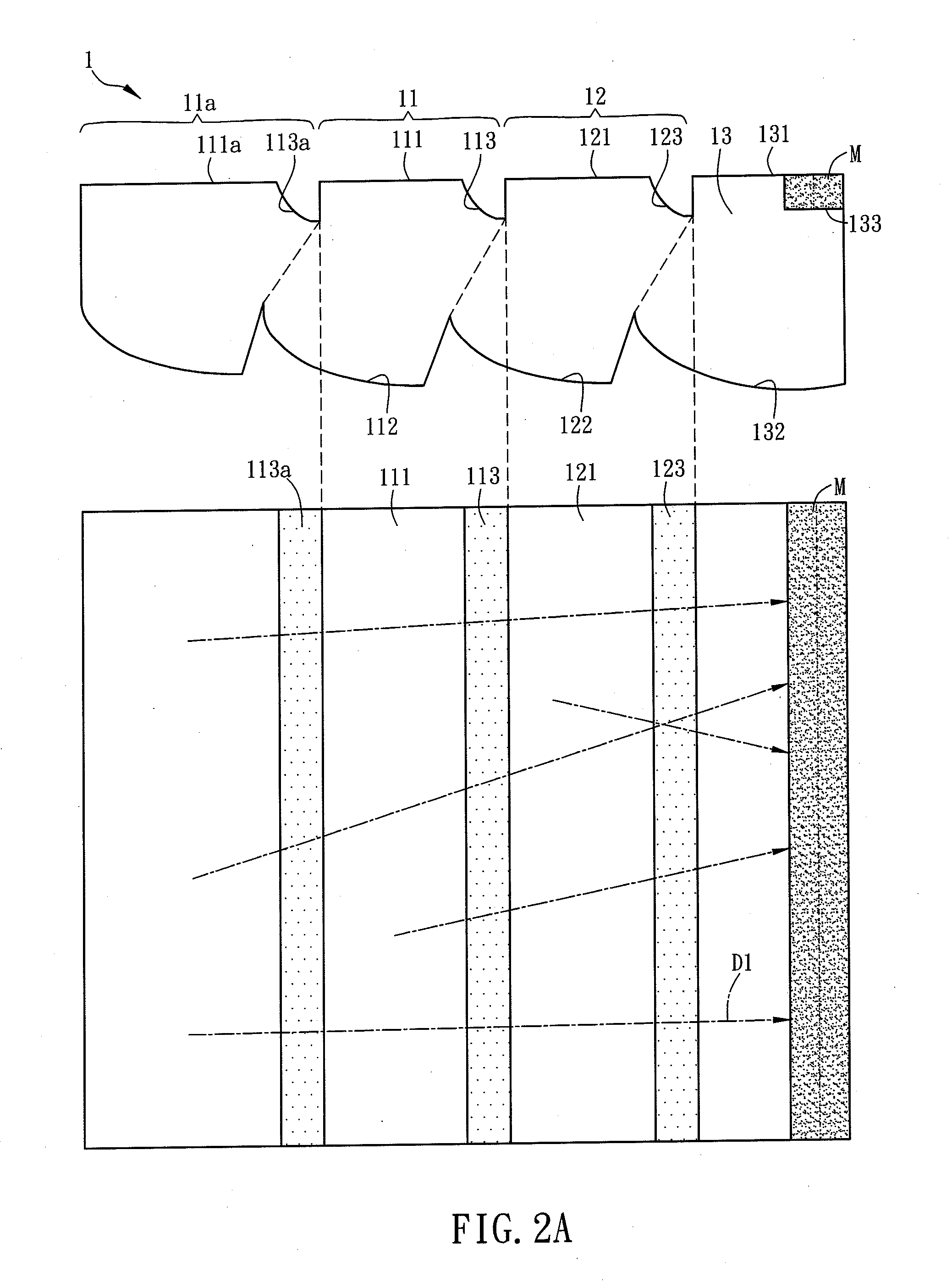Solar concentrator
a solar concentrator and solar energy technology, applied in the field of solar concentrator design, can solve the problems of increasing the overall system weight and wind loading force, the relatively low energy conversion efficiency of solar energy generation methods, and the relatively low cost compared with other conventional energy generation methods, so as to reduce solar tracking costs, and reduce the effect of back focal distan
- Summary
- Abstract
- Description
- Claims
- Application Information
AI Technical Summary
Benefits of technology
Problems solved by technology
Method used
Image
Examples
first embodiment
[0042]In the first embodiment, the solar concentrator 1 may further include another first light guiding module 11a. One end of the first light guiding module 11 is connected with the first light guiding module 11a, and the other end of the first light guiding module 11 is connected with the second light guiding module 12. The first light guiding module 11a may have the shape the same as or different from that of the first light guiding module 11 to facilitate the manufacturing process or to accommodate the optical design to increase the light input area of the light L. The image point of the first surface 111 and the image point of the first relay reflective surface 113a of the first light guiding module 11a are substantially coincident. In other words, light L incident to the first surface 111 is the parallel beam imaged at infinity; while the light L incident to and reflected by the first relay reflective surface 113a to is also a parallel beam imaged at infinity, so the image poi...
second embodiment
[0051]FIGS. 3A and 3B are top views showing solar concentrators according to the invention.
[0052]As shown in FIGS. 3A and 3B, the solar concentrators 2a and 2b are substantially the same as the solar concentrator 1 of the first embodiment except that the solar concentrator 1 converges the light to a lateral side thereof, while each of the solar concentrators 2a and 2b converges the light to a middle portion thereof. The light propagation destinations 233 of the solar concentrators 2a and 2b are disposed at the middle portions of the solar concentrators 2a and 2b, respectively. The light propagation destination 233 and the termination module 23a and 23b are disposed at the middle as shown in FIG. 3A or 3B, and a plurality of first light guiding modules 21a and a second light guiding module 22a are disposed at each of the opposite sides of the middle termination module 23a in a symmetrical way. Therefore, each of the solar concentrators 2a and 2b has two main light guiding directions ...
third embodiment
[0053]FIG. 4 shows top and cross-sectional views of a solar concentrator according to the invention.
[0054]Referring to FIG. 4, the solar concentrator 3 is similar to the solar concentrator 1 of the first embodiment except that the first light guiding module 31 and the second light guiding module 32 of the solar concentrator 3 have the ring shapes and are arranged in concentric circles. The light L is mainly guided to the center of the concentric circles along the radial direction D4. An opto-electronic conversion element or a heat transfer medium is disposed in the light propagation destination 333 of the termination module 33 and it is positioned at the second side S2 of the solar concentrator 3 for a better wire connectivity and environmental shielding. Of course, the light propagation destination 333 may also be disposed on the first side S1.
PUM
 Login to View More
Login to View More Abstract
Description
Claims
Application Information
 Login to View More
Login to View More - R&D
- Intellectual Property
- Life Sciences
- Materials
- Tech Scout
- Unparalleled Data Quality
- Higher Quality Content
- 60% Fewer Hallucinations
Browse by: Latest US Patents, China's latest patents, Technical Efficacy Thesaurus, Application Domain, Technology Topic, Popular Technical Reports.
© 2025 PatSnap. All rights reserved.Legal|Privacy policy|Modern Slavery Act Transparency Statement|Sitemap|About US| Contact US: help@patsnap.com



